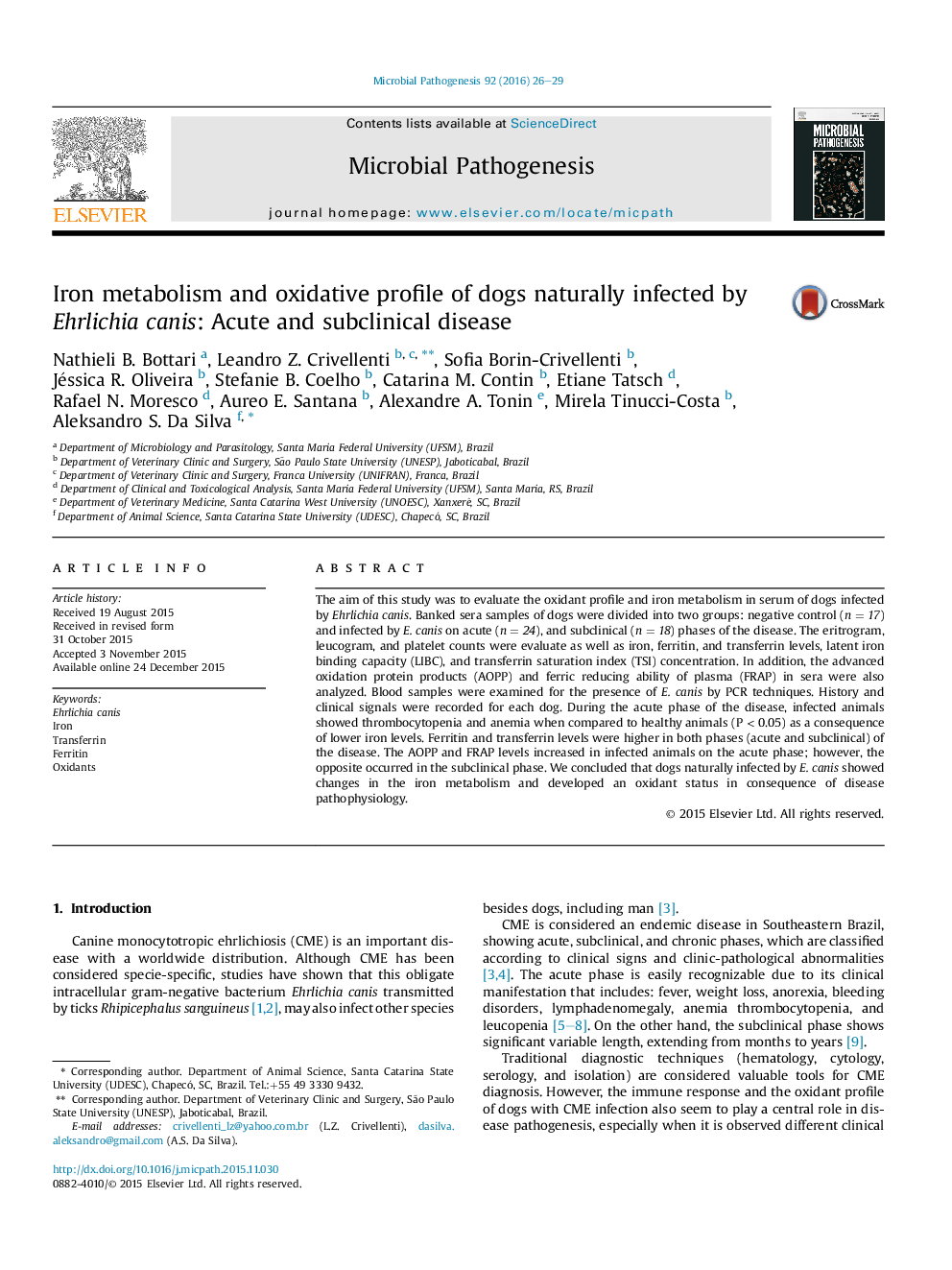| Article ID | Journal | Published Year | Pages | File Type |
|---|---|---|---|---|
| 6136133 | Microbial Pathogenesis | 2016 | 4 Pages |
Abstract
The aim of this study was to evaluate the oxidant profile and iron metabolism in serum of dogs infected by Ehrlichia canis. Banked sera samples of dogs were divided into two groups: negative control (n = 17) and infected by E. canis on acute (n = 24), and subclinical (n = 18) phases of the disease. The eritrogram, leucogram, and platelet counts were evaluate as well as iron, ferritin, and transferrin levels, latent iron binding capacity (LIBC), and transferrin saturation index (TSI) concentration. In addition, the advanced oxidation protein products (AOPP) and ferric reducing ability of plasma (FRAP) in sera were also analyzed. Blood samples were examined for the presence of E. canis by PCR techniques. History and clinical signals were recorded for each dog. During the acute phase of the disease, infected animals showed thrombocytopenia and anemia when compared to healthy animals (P < 0.05) as a consequence of lower iron levels. Ferritin and transferrin levels were higher in both phases (acute and subclinical) of the disease. The AOPP and FRAP levels increased in infected animals on the acute phase; however, the opposite occurred in the subclinical phase. We concluded that dogs naturally infected by E. canis showed changes in the iron metabolism and developed an oxidant status in consequence of disease pathophysiology.
Related Topics
Life Sciences
Immunology and Microbiology
Microbiology
Authors
Nathieli B. Bottari, Leandro Z. Crivellenti, Sofia Borin-Crivellenti, Jéssica R. Oliveira, Stefanie B. Coelho, Catarina M. Contin, Etiane Tatsch, Rafael N. Moresco, Aureo E. Santana, Alexandre A. Tonin, Mirela Tinucci-Costa, Aleksandro S. Da Silva,
